Part two of our Best of the Decade feature runs the gamut, from animation (Kubo and the Two Strings, Loving Vincent), to blockbuster actioners (Mad Max: Fury Road, Mission: Impossible – Fallout), to avant-garde experiments testing the boundaries of cinema itself (Sleep Has Her House, Bitter Lake). Think we missed anything? Let us know @BigPicFilmMag!
2015
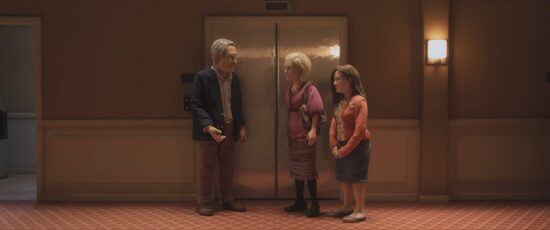
Anomalisa (Dir. Charlie Kaufman)
One of my great pleasures of this century so far has been reveling in the beauty of the work of Charlie Kaufman, since he exploded into my life at the tail end of the last one, with Being John Malkovich. His only feature film this decade, a sad statistic if ever there was one, is, nonetheless, a deeply moving and vital one. Co-directed with Duke Johnson, this surreal stop-motion tells the story of Michael Stone (voiced by David Thewlis), a man narcissistically trapped in his own mediocrity, frantically searching for something magnificent, but unable to look beyond his own ego to find it. A contemporary fable that is profound and sad, but brimming with glorious storytelling moments and unforgettable puppet oral sex.
-Neil Fox (NF)
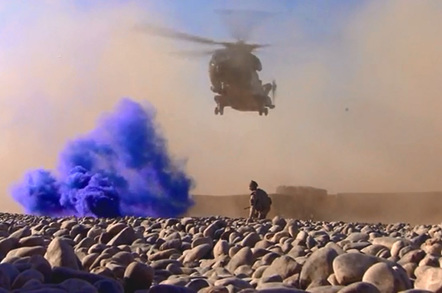
Bitter Lake (Dir. Adam Curtis)
A documentary, albeit a documentary dressed up in tie-dyed clothes, Bitter Lake is not a film from which to learn about the ongoing war in Afghanistan and the recent history of struggle between East and West, Islam and Christianity, though there’s a potted history here for anyone who’s interested. Adam Curtis’ abstract essay wields a dark magic, mixing narrativised fact and conspiracy theorising in a brew of ambient music and hallucinatory, sometimes bracingly discomforting archival off-cuts, Burial and Kanye West accompanying gory footage of conflict and no-less-momentous recordings of world leaders holding century-defining meetings out of the public eye. The film is a two-hour hypnosis, purportedly to educate but better to experience.
-Brogan Morris (BM)
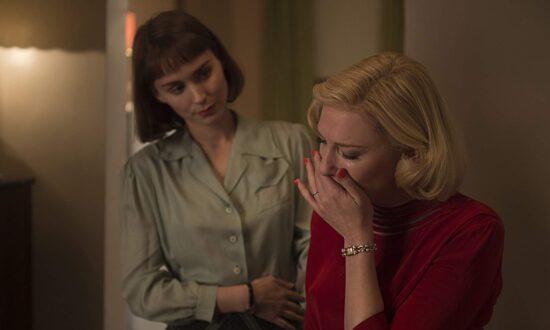
Carol (Dir. Todd Haynes)
From rough-hewn beginnings and the brutal realities of Genet (Poison) past the rock ’n’ roll glitter-arty glam excess of Velvet Goldmine, Los Angeles’ Todd Haynes evolved a singularly sumptuous cinematic signature, classic in style, rich in substance and high in emotion, that seemed to have reached a natural peak with the Sirk-ian Far From Heaven (2002).
Haynes’ superbly cast (Cate Blanchett, Rooney Mara, Sarah Paulson, Kyle Chandler) Patricia Highsmith adaptation Carol (2015) turned it up a notch as a beautifully designed and photographed period piece, graced by a magnificent Carter Burwell score – a romance pitting love against the combined intolerances of strict tradition, conventional family and suffocating society.
-Callum Reid (CR)
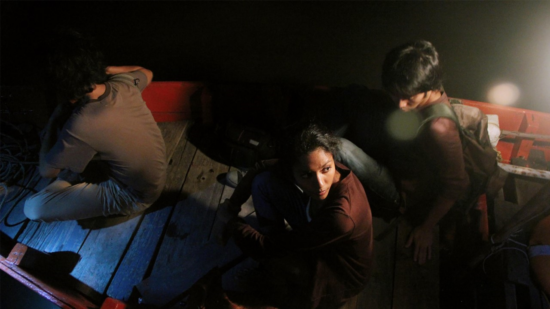
The Island Funeral (Dir. Pimpaka Towira)
Ostensibly a road movie involving the journey of three young people (a sister, her brother and their friend) from Bangkok back to their family home in the southern Thai province of Pattani, The Island Funeral is a genuinely haunted (and haunting) film. The trio’s road trip becomes complicated when they pick up a soldier. Pattani province is a war torn part of Thailand, that the Thai government has effectively put under martial law. Towira’s film quietly exhumes the ghosts of a past mired in ethnic and religious turmoil, to entrancing and uncanny effect.
The peculiar dynamism of Towira’s film comes from a thoroughly immersive sense of being lost and in desperate need of guidance at every turn. This is a sensation further enhanced by DOP Phuttiphong Aroonpheng, who puts together a series of spatially dislocating tracking shots, that become increasingly mesmerising in their expansions and contractions of the water-logged closing wholly ‘fictional’ island location. Towira also shares a penchant for the layered and densely packed imagery of her more internationally recognisable compatriot Apichatpong Weerasethakul, as if the complex accretions of history are infused into every frame. What you are left with is one of the most rigorous and captivating exercises in awe inducement that recent cinema has given us and a perfect exemplar of how serious flaws in international distribution in anglophone countries let masterpieces slip out of cinemas almost unnoticed.
-Rohan Crickmar (RC)
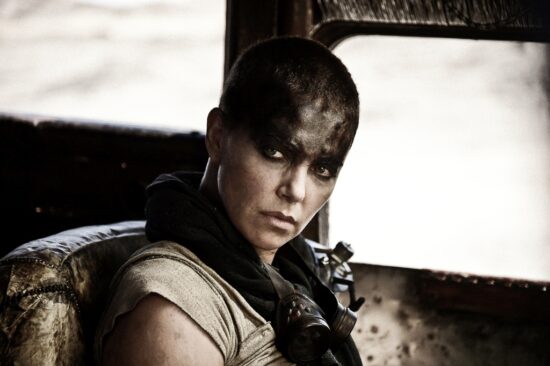
Mad Max: Fury Road (Dir. George Miller)
In action movies the real winners are the survivors and who is a more deserving survivor than veteran Aussie filmmaker George Miller who delivered one “perfect” action spectacular with Mad Max 2 in 1981 and then, 34 years later, repeated the trick for a new generation of adrenaline junkies?
Fury Road is a ferocious, feral, desert-set epic of excitement, packed with indelible images (the swinging polecats, anyone?), jawdropping stunts and high-end technical wizardry which saw Charlize Theron more or less stealing the show as the colourfully monikered Imperator Furiosa, flexing her female muscles – the new generation said yes please, and me too.
-CR
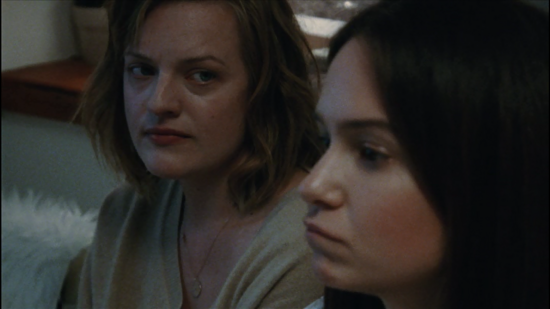
Queen of Earth (Dir. Alex Ross Perry)
I think it’s now a requirement to use the word “acidic” when reviewing an Alex Ross Perry film, and this 2015 melodrama shows exactly why. Perry’s ear for piercing dialogue is on full display (I love how Elisabeth Moss hisses “I love you more than anything, you stupid brat!” to an exhausted Katherine Waterston), but Queen of Earth stands out from the rest of his output by discreetly dipping its toe into horror territory. It’s an oddly-perfect synthesis of tones, Philip Roth with a dash of Ingmar Bergman, and it remains the writer-director’s best film to date.
-Thomas Puhr (TP)
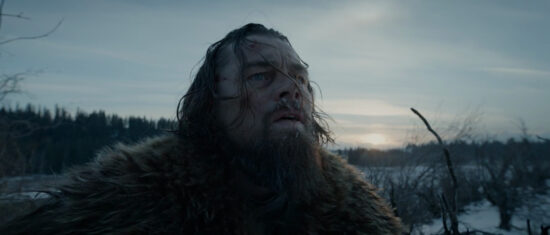
The Revenant (Dir. Alejandro G. Inarritu)
The bear attack quickly became movie legend and Leo DiCaprio reminded us again how he made his bones as one of the most vital screen actors of a generation (including, of course, the screen decade we are right here right now considering).
Amid challenging exhibition times to be proliferated by 3D, 4DX, IMAX and whatever else, director Alejandro G. Inarritu and director of photography Emmanuel Lubezki (Children Of Men, Birdman) delivered with The Revenant’s sinuous unbroken shots – plus an intricately invasive soundscape – a truly immersive, purely cinematic experience that tossed the audience into the middle of the action and made them feel every last breath, every merciless impact, every shocking blindside hit in this cathartic tale of unforgiving wilderness America that discovered a post-Malick New World of natural selection, unnatural horror and demonic revenge.
-CR

Tangerine (Dir. Sean Baker)
Sean Baker’s Tangerine, shot entirely on a modified iPhone 5s, lovingly captures the burger bars, fluorescent donut joints and neon-lit bars of downtown LA. Transgender sex worker Sin-Dee (Kitana Kiki Rodriguez) tears through the streets on Christmas Eve on the hunt for her pimp boyfriend who’s been cheating on her with a non-trans woman while she was in prison. There’s a softness and warmth that takes the edge off bleak circumstances and the resulting film is bittersweet yet boisterous, and lonely but with laugh out loud moments. Oh, and turn it up – the soundtrack’s great.
-Georgina Guthrie (GG)
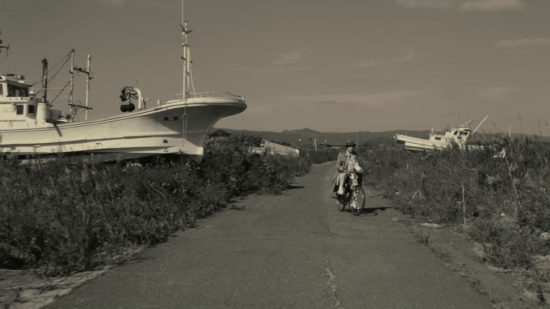
The Whispering Star (Dir. Sion Sono)
The present joins the future in Sion Sono’s The Whispering Star, shot at various places in Fukushima Prefecture four years after the nuclear disaster in March 2011. Black-and-white photography with beautiful lighting and framing and highly creative use of the most ordinary objects, combined with science fiction devices and complex working with voices and with silence, create a constant feeling of disquiet. The images of run-down buildings and human isolation suggest that this vision of a bleak future is already part of our present.
-Andrea Grunert (AG)
2016
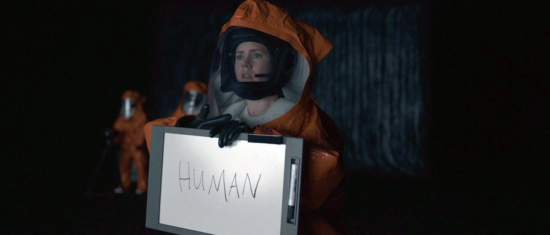
Arrival (Dir. Denis Villeneuve)
Arrival is a science fiction film that takes its science seriously, and in a novel and fascinating twist, the science in question is linguistics, with its characters geeking out about palindromes and Sapir-Whorf. It’s also a poignant emotional drama, with a heartbreaking performance from Amy Adams (that she wasn’t even nominated for the Oscar remains the most baffling balls-up of this decade’s awards).
What’s more, Eric Heisserer’s script does what all sci-fi storytelling should aspire to – takes that intelligent, geeky angle and that emotional, human side and ties them together intricately, so that they complement and build on, rather than get in the way of, each other (make sure to watch Arrival a second time to see how perfectly that big twist is set up). Denis Villeneuve brings this to the screen with visionary heft; the Magritte-like image of the floating spaceship lingers long in the mind.
-Kieron Moore (KM)
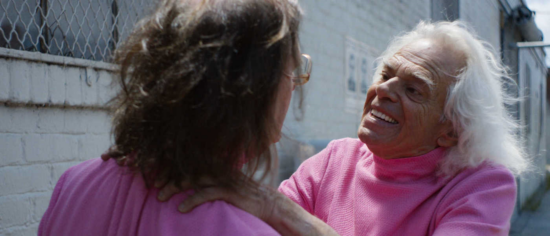
The Greasy Strangler (Dir. Jim Hosking)
Jim Hosking’s feature debut follows a walking tour leader who, by night, covers himself in grease and strangles people. We could go on and describe the various plot twists, but suffice to say that The Greasy Strangler becomes even weirder than its title suggests. Its heightened characters have a distinctly awkward style of dialogue, but that awkwardness has roots in the truth of difficult social interaction.
It’s a film that you have to be in the right mood for, and the ideal mood is probably slightly sleep deprived and slightly drunk, towards the end of a busy day at a film festival; it became a word of mouth hit on the festival circuit, with those who took to it finding the humour and madness hysterical. It also allowed Hosking to pick up a higher budget and a better-known cast, including Aubrey Plaza, for his follow-up An Evening With Beverly Luff Linn.
-KM
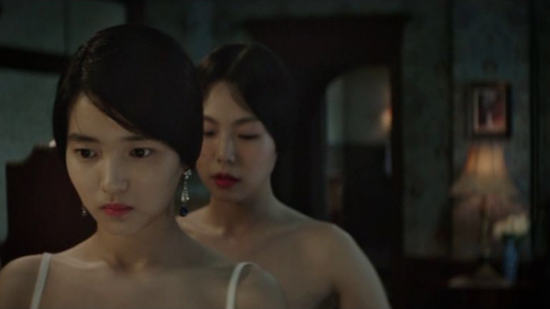
The Handmaiden (Dir. Chon-wook Park)
The Handmaiden is a subtle work with trials and tribulations which combines elements of Gothic tale, socio-historical satire and erotic thriller. The narrative is built on changing identities and shifting loyalties, on schemes and deception, revealing human beings caught in a network of passion and hope. Male sexuality is depicted as sterile and unsatisfactory, with men abusing women, whose wishes and desires they are unable to understand. The women in the film leave behind them their traditional role as objects of desire and show how pathetic the men are. Relationships between women are depicted as liberating, generating a human warmth that is lacking in the cold and cruel male world.
-AG

Kubo and the Two Strings (Dir. Travis Knight)
Laika, not Pixar, was the premier American animation house of the 2010s. Phil and Travis Knight’s stop-motion studio didn’t trouble the box office the way Disney’s all-CGI affiliate did – 2014’s The Boxtrolls was Laika’s highest-grosser of the decade with $109 million worldwide, whereas Pixar’s biggest ‘failure’ The Good Dinosaur took $332 million – but it was the more original and heartfelt, creating new myths from darkly fantastical stories of young people in turmoil. Laika’s best so far is Kubo and the Two Strings, an adventure through Eastern folklore that deals in adolescent trauma in medieval Japan, as a talking snow monkey and a giant samurai-shaped beetle guide a magical shamisen-wielding boy through loss and abandonment.
-BM
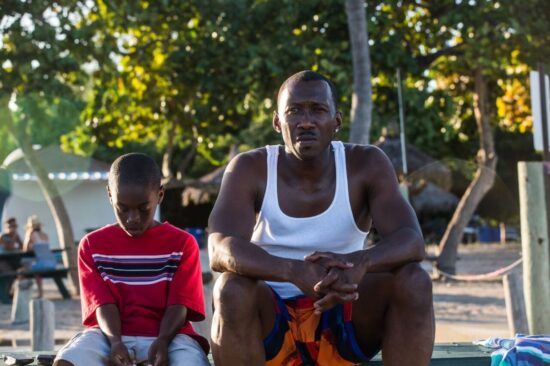
Moonlight (Dir. Barry Jenkins)
Make no mistake, this is one of the films of the decade for me – an amazing love story, a wrenching coming of age tale, a poetic cinematic experience, the arrival of a modern filmmaker of exceptional gift. This film is beyond genre and formal boundaries, existing on its own plain. It’s so achingly beautiful, and so confident in its execution that it feels timeless and universal while simultaneously speaking powerfully to specific lives and experiences too rarely rendered onscreen and certainly never like this. A truly magnificent film.
-NF

Paterson (Dir. Jim Jarmusch)
If pushed, I’d name this my favourite film of the decade. Yeah it’s a bit Ozu (never a bad thing), but it’s also super Jarmusch – It has Method Man acapella rapping in a launderette. It’s an ode to art, poetry, everyday beauty, love, life lived in the moment, soaking in the world around. Adam Driver is the perfect conduit for this tale of stoic contentment. The poems are good, there’s a twins motif, it’s funny and it makes me feel good to watch over and again, and to simply think about and know it exists in the world. A film where nothing happens but everything is felt.
-NF
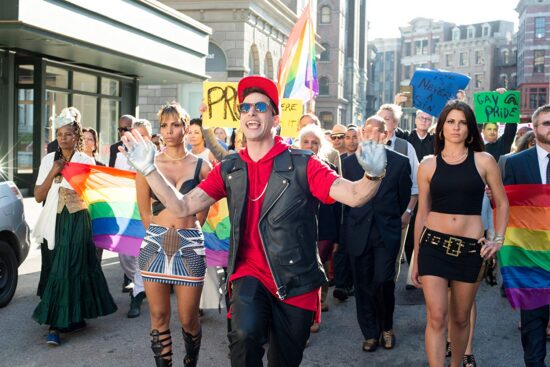
Popstar: Never Stop Never Stopping (Dirs. Akiva Schaffer & Jorma Taccone)
Some of the best comedy songs of all time, delivered in a film that really understands the music documentary and music television conventions needed to really pull off a successful mockumentary. The best music mock-doc since A Mighty Wind. Driven by the relentless charm and positivity of Andy Samberg, this is a joyfully tongue in cheek pastiche of 21st century pop presentation, that also includes Justin Timberlake dressed up as a fish playing guitar.
-NF

Things to Come (Dir. Mia Hansen Løve)
Mia Hansen Løve is a modern master. Her ability to wring emotional complexity out of familiar set ups, and heart-wrenching moments of human fragility and drama with the seemingly lightest of touches and smallest of gestures is a thing of wonder. Her collaboration with the peerless Isabelle Huppert is a truly philosophical delight. It’s tale of a woman wandering the city and the countryside pondering her life, the breakdown of her marriage, her family and her stagnating career, may be the über French, but in Løve and Huppert’s hands what emerges is something funny, sweet and resonant. A delightful film to spend time in for its aesthetic pleasures, but one that leaves you connected to its ideas and thoughts in profound ways.
-NF
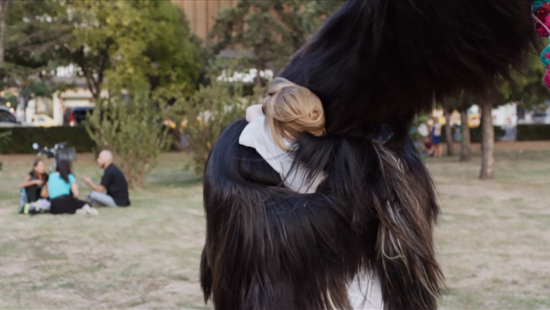
Toni Erdmann (Dir. Maren Ade)
I watched Maren Ade’s Toni Erdmann in bits and pieces, a half hour here and there over the course of a few days. Perhaps the runtime intimidated me; how could a comedy-drama justifiably be nearly three hours long? But that final scene between Ines (Sandra Hüller) and her father, accompanied so perfectly by The Cure’s “Plainsong,” hit me like few films do. I hesitate to watch this movie again, for fear of tainting that unique viewing experience. Ade takes us on a real journey: one with a genuine, bursting heart at its center.
-TP
2017
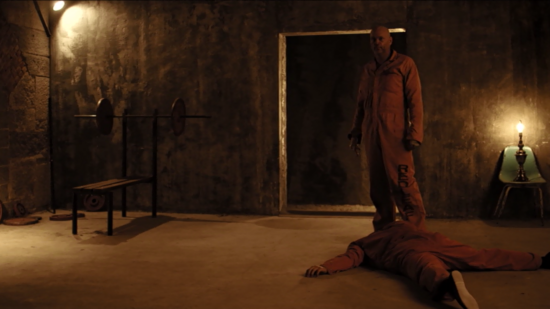
Brawl in Cell Block 99 (Dir. S. Craig Zahler)
Love him or hate him, there’s no denying that S. Craig Zahler can stage one hell of a fight sequence. While his other efforts have their fair share of hyperviolent set pieces, nothing comes close to the primal exhilaration of watching a stoic, bald-headed Vince Vaughn fight his way up a prison’s food chain, like a featureless character from some banned 90s arcade game. The final showdown alone consists of no fewer than five human skulls being smashed in some horrific way. Casual, queasy viewers should stay far away, but for gore-hounds (you know who you are), Brawl in Cell Block 99 is the holy grail of gratuity.
-TP

Edith Walks (Dir. Andrew Kotting)
While film twitter argues over whether Marvel is cinema or not, Andrew Kötting gets on with making what he wants, calling it cinema and letting the chips fall where they may. It’s cinema to me and my personal favourite of his prolific recent output is his psychogeographic recreation of the pilgrimage of Edith Swan Neck to Hastings, following news of her lover King Harold’s eye injury. This languorous road movie is irreverent, philosophical, poignant and alive with the storytelling possibilities that come when cinema is not an infrastructure but an idea.
-NF
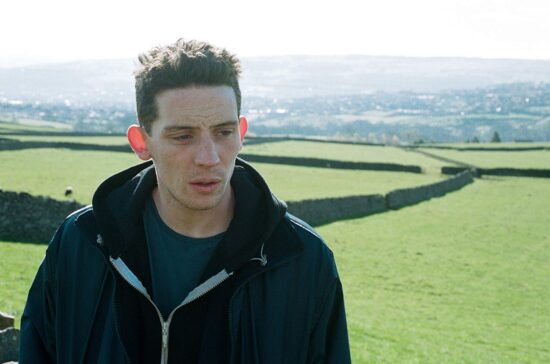
God’s Own Country (Dir. Francis Lee)
Francis Lee, in his debut as writer-director, delivered a love story for our politically troubled and financially divisive times – or politically divisive and financially troubled times? – that shrugged off an unhelpful “Brokeback Brexit” tag to take the central character on a journey that would, eventually (bit by bit, can of cheap lager by can of cheap lager, cigarette by cigarette), transform his view of the physical world he thought he knew just as it introduces him to a revelatory world of life’s possibilities.
A Romanian migrant worker (Alec Secareanu) arrives in Yorkshire to graft on a farm, and the unlikely evolution of his relationship with homegrown Johnny (Josh O’Connor) is thrown into harsh relief against the wild, evocative and soulful titular backdrop with the emphasis on authenticity and “less is more” as every nuanced look from veteran supporting actors Ian Hart and Gemma Jones help us realise this sparse but splendid tale truly is the real deal.
-CR
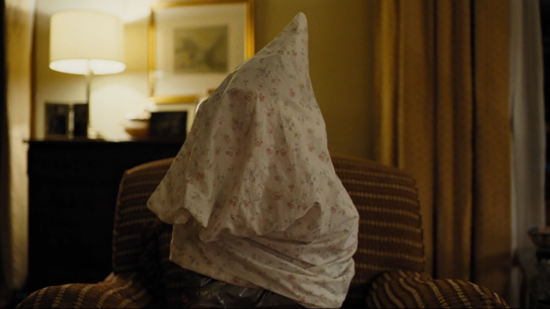
The Killing of a Sacred Deer (Dir. Yorgos Lanthimos)
Plenty of this decade’s horror films put the American nuclear family in their crosshairs, but Yorgos Lanthimos’ The Killing of a Sacred Deer stands out thanks to its absurd sense of humor and a trio of creepily deadpan performances by Colin Farrell, Nicole Kidman, and Barry Keoghan (only Lanthimos can make a teenager eating spaghetti so unsettling). Not since The Exorcist’s or The Shining’s use of Penderecki pieces has a horror film incorporated avant-garde compositions to such nerve-shredding effect: in this case, music by Sofiya Gubaydulina and Gyorgy Ligeti makes the Murphy family’s Kafkaesque descent into hell all the more disturbing.
-TP

Loving Vincent (Dirs. Dorota Kobiela & Hugh Welshman)
The desire to make pictures move is a very old one. But do van Gogh’s paintings require animation? They do not, but the film, despite some repetition, is technically brilliant, displaying images which are faithful to the originals. Inspired by van Gogh’s oeuvre and other impressionist paintings, they are more than eye candy. Vibrant colours and delicate pastel shades, hard lines and angles and soft curves are contrasted to create an imaginary world of its own. The pictures clearly do not try to conceal the fact that a number of artists were involved in the project, revealing the effort of a team of creators with different personal styles.
-AG
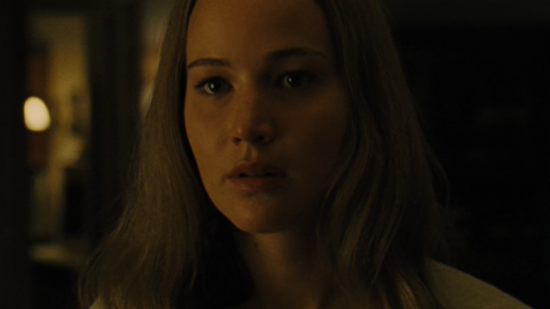
Mother! (Dir. Darren Aronofsky)
Darren Aronofsky is not one for stylistic subtlety, and his swing for the fences approach yields wildly inconsistent results. He really tapped into something with Mother!, though; even that exclamation-pointed title feels bold. Where Noah was gently revisionist, yet ultimately reverent in its religious explorations, Mother! is anarchic and indignant; everyone, even God, is an oblivious plunderer of the Earth in this strange allegorical tale. It’s a bit shocking that Paramount would give this type of film such a wide release, or even the green light; I wish major studios took risks like this more often.
-TP

Paddington 2 (Dir. Paul King)
There was no reason to expect a movie about Paddington Bear to be anything but another cynical, by-the-numbers studio production. It was so much more than that. Even more remarkably, the sequel not only equalled, but surpassed it.
Paddington 2 is a warm bear hug of a movie. There’s no pretension to worthiness; it just wants to make you laugh, to make you cry, to celebrate the good in the world and to make fun of the bad, and to send you out at the end with a big grin on your face. It’s chock-full of hilarious set pieces, charming British wit, and perfect casting: Ben Whishaw’s gently spoken bear is impossible not to love, but Hugh Grant steals the show as the narcissistic thespian baddie. More than that, the beautiful message about multiculturalism and the value of kindness is needed more than ever.
-KM
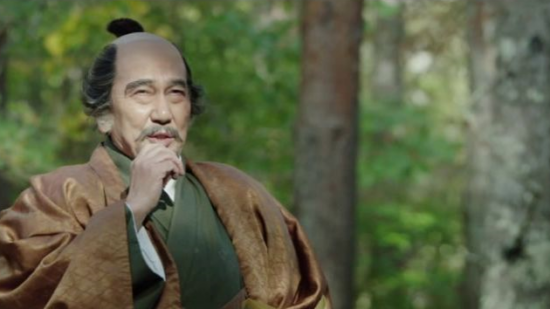
Sekigahara (Dir. Masato Harada)
Masato Harada’s film about the famous Battle of Sekigahara in 1600 and the events that led to this crucial event in Japanese history revisits the role of Mitsunari Ishida, for a long-time regarded by historians as a mere bureaucrat. Harada’s dynamic and elegant mise-en-scène keeps a wonderful balance between motion and stillness, intensity and sobriety. There is a latent tension which is palpable at every moment. Jun’ichi Okada’s subtle approach to the character of Ishida finds its counterpart in Koji Yakusho’s brilliant performance as Ieyasu Tokugawa, which depicts this famous historical figure as energetic and sensual.
-AG
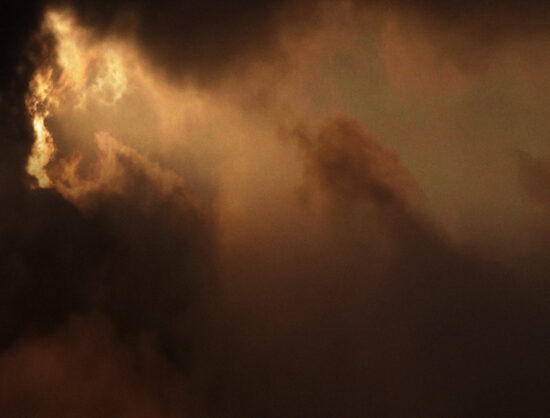
Sleep Has Her House (Dir. Scott Barley)
It’s not just the images that are seared into my psyche from Scott Barley’s phenomenal art/slow cinema/experimental documentary film, but the sound. The crash of the waterfall he captures in particular, as it cascades limitlessly. Barley is a filmmaker of amazing voice and precision. He creates shuddering and visceral responses to the environment and human presence by using absence, sound and digital imagery to devastating emotional effect. A filmmaker in the landscape, in the world, responding with breathtaking cinema. His debut feature is a dense and hypnotic work of land, nature and the imaginary. See it and be forever altered.
-NF
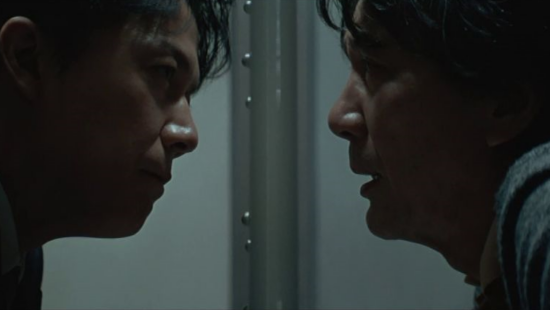
The Third Murder (Dir. Hirokazu Kore-Eda)
Hirokazu Kore-Eda’s film starts as a crime drama but quickly develops into a complex exploration of a legal system and a metaphysical examination of the question of truth. Social criticism targets a society that contents itself with ready-made answers instead of pursuing the truth. Contradictory viewpoints and information diffract coherence, revealing the fragility of perception and challenging conventional narrative patterns, while latent tension grips our imagination long after the film’s unexpected end.
-AG

You Were Never Really Here (Dir. Lynne Ramsay)
In my top 3 films of the decade I reckon. Lean, taut, exhilarating cinema. A feast for the eyes, ears and heart. Few modern filmmakers understand the visceral, multi-sensory potential of cinema than Lynne Ramsay and her collaborators. Her fourth feature is a pulp thriller with a vice-like grip, following hitman/mercenary Joe as he battles demons, both figurative and more literal, on his quests to find young women sold into sex trafficking. In Joaquin Phoenix, Ramsay finds her best actor collaborator since Samantha Morton in Morvern Callar and with Jonny Greenwood’s score, Taxi Driver resonances that pound Joker’s into dust and a diamond like focus on tension, what emerges is a true contemporary masterpiece.
-NF
2018
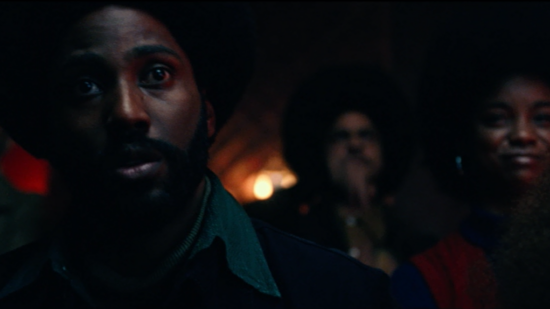
BlacKkKlansman (Dir. Spike Lee)
BlacKkKlansman is obviously much more than a straight comedy, but its many laughs provide an undeniable catharsis. I’m so glad that I got to see this film, Spike Lee’s best in years, upon its initial release. It elicited such a range of emotions in the packed theater, where uproarious laughter was often bookended by angry groans or, most powerfully, by shocked silence. Few directors could produce a film that so warmly celebrates love and life without turning a blind eye from injustice or sinking into glibness, but Lee did it, and at a time when America sorely needed it.
-TP
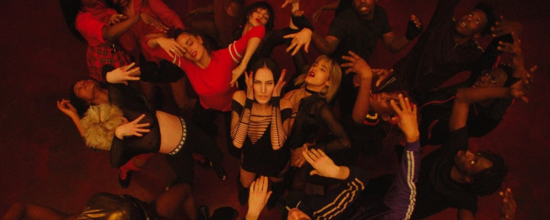
Climax (Dir. Gaspar Noé)
From agent provocateur Gaspar Noé, Climax shows us what happens when a dance troupe hold a post-rehearsal party and their drinks are spiked with LSD. Very loosely inspired by a real incident, what follows is an intense spiral into chaos and degradation (a fitting movie for the 2010s, then).
It’s the kind of movie where it’s impossible to take a toilet break, as the long, fluid takes and pumping soundtrack ensure there’s never a half-second to breathe. The decision not to visualise any hallucinations is a good one, with the experience convincingly conveyed through acting – you can tell exactly what’s going on in Sofia Boutella’s character’s mind when she stops and takes in a mural of a forest – and increasingly unstable camerawork – you can’t help but admire the madness of having the camera literally upside down for the climactic sequence.
-KM
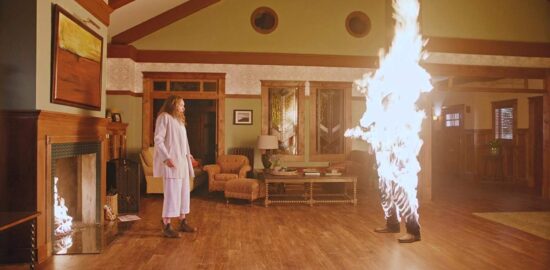
Hereditary (Dir. Ari Aster)
As soon as Hereditary’s end credits began, I knew that I had seen something truly exceptional. My initial response to most movies is more muted, hesitant; I might know that I really like something, but I still need time to digest it (I felt this way after watching Ari Aster’s very good, but not quite great follow-up, Midsommar). But Hereditary was different. Despite its grim subject matter, I felt elated when walking out of the theater. Repeat viewings continue to yield new and intriguing details (Charlie’s bedroom has its own flight of stairs and is above the other bedrooms, perhaps like a treehouse in and of itself?). Also, it should go without saying that Toni Collette’s performance is one of the decade’s best.
-TP

Infinite Football (Dir. Corneliu Porumboiu)
Haunted by a soccer-playing injury that drastically altered his life, Laurentiu Ginghina has dedicated himself to creating a radically-different, less “violent” version of the game. It’s easy to write off this 70-minute documentary as a chronicle of one man’s obsessive folly, but the film gradually reveals itself as a sincere inquiry into how people can learn and grow from suffering. Ginghina’s outlook on life (and sports) belongs in a philosophy textbook: “I realized that if you start from the idea that you can always find rules, norms and a general framework in which people can be less violent, it’s possible for people to live in greater harmony. And this also applies to sport.”
-TP
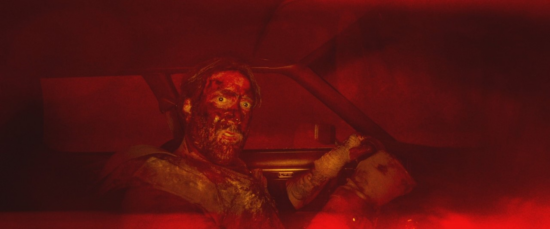
Mandy (Dir. Panos Cosmatos)
You can inhale at the start of Panos Cosmatos’ movie and not exhale until it finishes. It’s a simple plot, one that could make for a rubbish B-movie – Nicolas Cage’s wife is killed by a cult, he goes after them for revenge – but presented with such insane, intense, beautiful style that it somehow became an unmissable cinematic experience.
If you want to interpret this as an Orpheus-style journey into the underworld, you definitely can, or you can just enjoy Nicolas Cage turned up to eleven and applaud at the chainsaw duel and the extravagant kills. It’s also reflective of a recent trend we very much approve of – a few years ago, action films tended towards muted, grungy colour palettes, but Cosmatos throws primary colours across the screen with glee, and the film looks incredible for it.
-KM

Mission: Impossible – Fallout (Dir. Christopher McQuarrie)
In the age of comic book cinema, probably the only way for the Mission: Impossible movies to survive was to supersize. So after Ghost Protocol‘s Burj Khalifa climb and Rogue Nation‘s death-defying underwater stunt, the sixth instalment in the franchise dropped Ethan Hunt out of a plane flying at 25,000 ft, sent him furiously parkouring across the London skyline and placed him in literally a helicopter duel with an evil, moustachioed Henry Cavill. Fallout turns Tom Cruise’s unstoppable secret agent superheroic, then pits him against a hulking supervillain as brawny and crafty as Bane – but rather than being simply ridiculous, the series finally finds its purpose here, in a gloriously bombastic 21st century blockbuster that combines Bondian intrigue with Marvel gigantism.
-BM
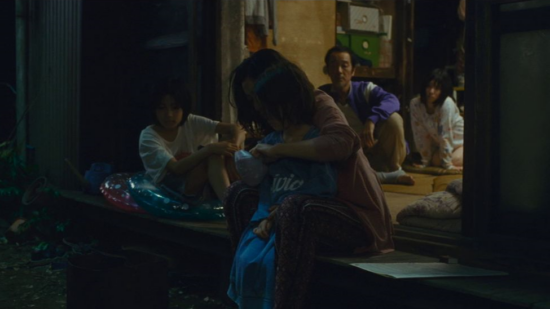
Shoplifters (Dir. Hirokazu Kore-Eda)
Shoplifters confronts the viewer with a bleak present-day Japan. Kore-Eda manages to combine tenderness and cruelty, avoiding sentimentality in his exploration of the concept of family, which is at the core of his social portrait. Every detail has strong significance and contributes to this film’s critical view of Japanese society and its multifaceted discourse on the human condition.
-AG
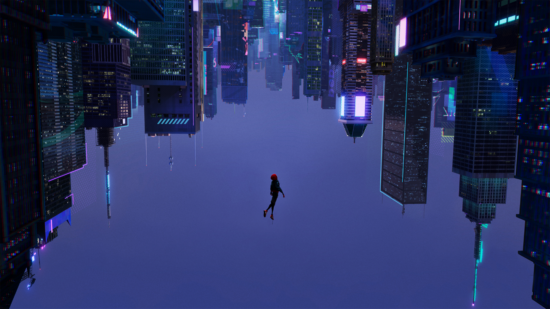
Spider-Man: Into the Spider-Verse (Dirs. Bob Persichetti, Peter Ramsey, & Rodney Rothman)
As Martin Scorsese will happily tell you, cinemas have been full of superhero movies this decade, and while those movies are all popular, their varying quality and reliance on formulae has attracted the ire of some more discerning cinephiles. It was easy, then, when hearing about Into the Spider-Verse, to crack jokes about yet another Spider-Man incarnation.
But Into the Spider-Verse knows that all too well, and not only makes those jokes itself, with a cheekily self-aware story about a proliferation of Spider-Men (and women, and pigs) but twists them into something more – a celebration of diversity. We dare you not to be won over by its message that anyone can be a hero. It’s also gorgeously animated, with vibrant colours, playful switching of styles to reflect the various characters, and one of the greatest hero shots in recent cinematic memory.
-KM

Suspiria (Dir. Luca Guadagnino)
Probably the most controversial pick on my list. A remake! I’m sure the true horror aficionados will baulk but this was a film that really haunted me and stayed with me. The tone, texture and patience of the experience were something else. It’s a film that understands and appreciates the roots laid down by Argento’s original but is not afraid to plough its own furrow and do its own things. I love the changes it makes, not least in the agency it gives its protagonist Dakota Johnson’s Susie, who in Luca Guadagnino’s update leans in to the witchy shenanigans at the prestigious dance academy she attends as the eerie tension is cranked and cranked until the explosive, cathartic, blood soaked finale.
-NF
2019
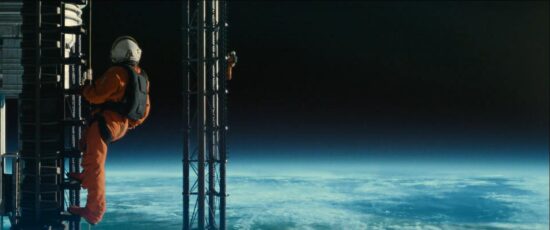
Ad Astra (Dir. James Gray)
I might have gone for High Life had I seen it earlier, but to be honest it’s still working its way through my system. James Gray’s poignant spectacle hit me more directly. It felt like a validation for Gray, finally working at a scale he deserves. He’s one of my favourite filmmakers and I adored this tale, anchored by an amazing Brad Pitt performance, of a man seeking answers, and man seeking answers. A great mix of hard sci-fi ideas, philosophical musings and superb action sequences, it’s a film whose charms and power will only grow. If for no other reason than what will likely be its eerily prescient visualization of what an eventual public transport moon-terminus will look like.
-NF

Booksmart (Dir. Olivia Wilde)
Queer stories were once restricted to low-budget, indie fare, but in 2018’s Love, Simon, we had a mainstream high school romcom with a gay lead, and in this year’s Booksmart, we had another. This tale of two female nerds trying to join the cool crowd for the last party of school captures that feeling of not fitting in, and reminds us that maybe everyone feels that too. The fumbling romantic and sexual interactions are on point.
It’s a confident and energetic directorial debut from Olivia Wilde, showing she not only understands actors but how to use camera, sound and editing to enhance a scene’s effect. Anyone with the balls to chuck in the animated sequence and the dream-like dance number in the middle of what could be mistaken as a typical high school comedy has a pretty good filmmaking career ahead of them.
-KM
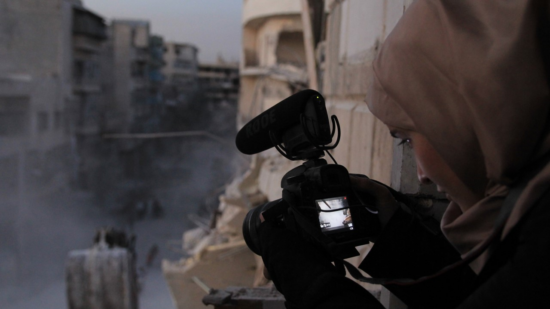
For Sama (Dirs. Waad Al-Khateab & Edward Watts)
Wars in the Middle East filled our newsfeeds this decade, but, as much as we might not like to admit it, it’s easy to become desensitised to that footage from the other side of the world. Waad Al-Khateab and Edward Watts’ chronicle of the Syrian Civil War is not so easy to switch off.
Comprised of footage shot by Al-Khateab, a journalist and a mother, across the four years during which Aleppo was devastated by conflict, For Sama reminds us that those far away warzones are inhabited by real, living humans. It’s not an easy watch, as theirs is a horrible, dangerous life. But it’s poignant, too; while bombs go off in the background, Al-Khateab falls in love, marries, and gives birth to the eponymous Sama, while various characters share moments of lightness that we might recognise from our own lives.
-KM
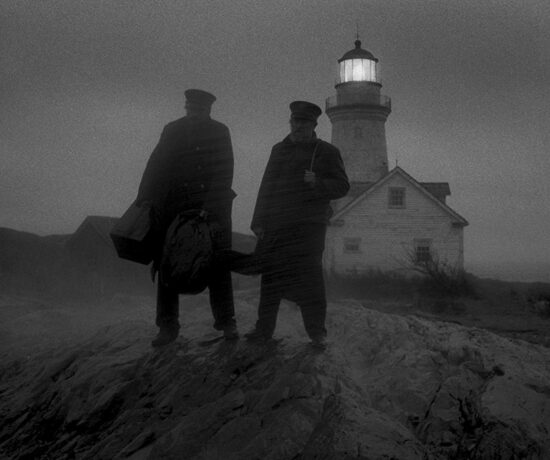
The Lighthouse (Dir. Robert Eggers)
Seeing The Lighthouse was one of the most immersive theater-going experiences I’ve had in some time. Though Robert Pattinson more than holds his own with Willem Dafoe, the film ultimately hinges on the latter’s fierce performance. Dafoe’s face, adorned with a truly magnificent beard and an omnipresent pipe, mesmerizes on the big screen. Robert Eggers’ use of extreme close-ups, stark black-and-white photography, and a narrow aspect ratio create a palpable sense of unease and claustrophobia. The film is nearly unclassifiable in terms of genre, but it’s probably the closest we’ll get to a cinematic adaptation of “The Rime of the Ancient Mariner” (or Waiting for Godot, for that matter).
-TP
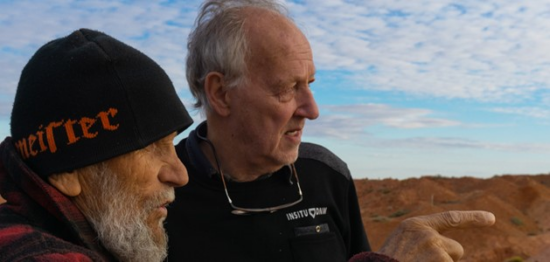
Nomad: In the Footsteps of Bruce Chatwin (Dir. Werner Herzog)
The bond between the titular legendary English traveller/writer and the visionary German film-maker Werner Herzog is revealed in this eye-opening, inspiring, moving and downright mindboggling tale encompassing a hefty rucksack (or “rook-sack”!) full of topics and an ever-changing landscape of bold ideas and pure adventure.
Their paths criss-crossed on a panoramic walkabout that impacted both their lives – but is Herzog aware of exactly what he is revealing about himself, while seemingly turning his focus on the other? A milestone documentary that subtly expands the form even as you ponder its mysteries.
-CR

Pain & Glory (Dir. Pedro Almodovar)
A love letter to the movies from a celebrated director that thrilled with its classic craft, delightful detail and sheer emotional heft while calming the spicy mix with an irresistible sprinkling of dark humour – yes, Quentin Tarantino’s Once Upon a Time in Hollywood was in cinemas at the same time as Pedro Almodovar’s Pain & Glory but it was the latter who proved the master with a subtle control and understated beauty far beyond QT (and most other directors working today).
Almodovar’s semi-autobiographical tale of a reminiscing film-maker with late career creative block was graced by a splendid cast – Antonio Banderas (never better), Asier Etxeandia (even better!), Leonardo Sbaraglia and Penelope Cruz, as luminous and engaging as ever. Another special, special score from Alberto Iglesias made this a pure treat.
-CR
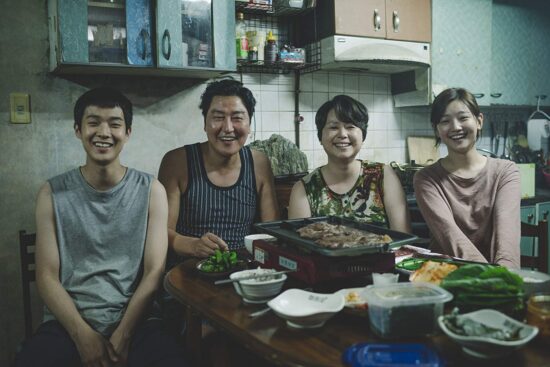
Parasite (Dir. Joon-ho Bong)
Joon-ho Bong’s film strongly criticizes the social divide in South Korea but does so in a most entertaining way. What could have been simply a bleak social drama is a satire with surprising twists. This Golden Palm winner deals with the struggle for survival of those living in the margins of society with irony and a sometimes very dark humour that Bong cleverly uses to underline the differences between the rich and the poor, never hiding the fact that he sides with the latter. However, the laughter Parasite creates sometimes sticks in the throat.
-AG